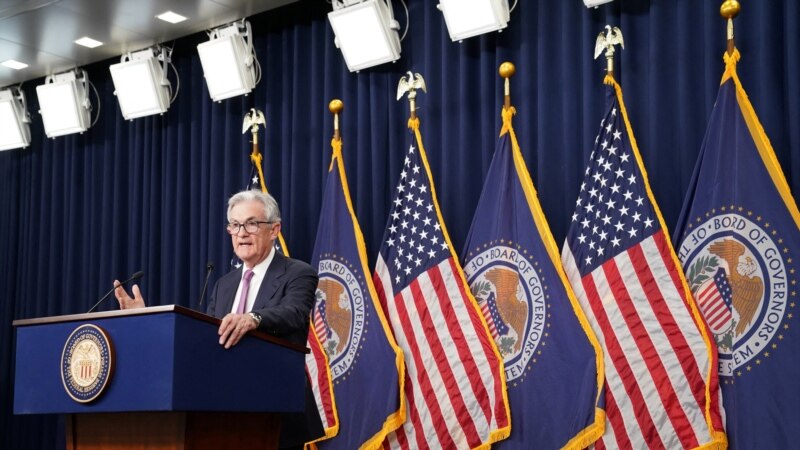
The Federal Reserve kept interest rates unchanged on Wednesday, but noted in its new economic projections that borrowing costs will likely rise another half percentage point this year, in light of a stronger-than-expected economy and a slower decline. of inflation.
In an effort to balance risks to the economy with an unresolved fight to control inflation, “holding the (interest rate) target range stable at this meeting allows the committee to assess more information and its implications for monetary policy.” the Federal Open Market Committee, charged with setting rates, said in a unanimous statement at the end of its two-day meeting.
The new rate increases “would take into account the accumulated tightening of monetary policy, the delays with which monetary policy affects economic activity and inflation, and economic and financial developments.”
In remarks after the release of the Fed statement, Fed Chairman Jerome Powell noted of the pause in rate hikes: “We have covered a lot of ground and the full effects of our tightening have not yet been felt.”
Powell added that almost all Fed officials expect more rate hikes this year, and while they haven’t decided what they will do with rates in the next few meetings, July is an “open meeting” that could bring another rate hike. rates.
Adding a hawkish bias to Wednesday’s interest rate decision, the new projections show that the median of policymakers believes the benchmark overnight interest rate will rise from the current range of 5.00%-5.25% up to a range of 5.50%-5.75% at the end of the year.
Half of the 18 Fed officials put their “point” at that level, and three of them believe the benchmark interest rate will rise further, including one official who believes it will go above 6%.
Two Fed officials think rates will stay where they are, and four think a single hike of more than a quarter of a percentage point is probably appropriate.
However, policymakers expect rate cuts of 100 basis points in 2024, along with a rapid decline in inflation.
Combined, the rate outlook and projections are likely to lead investors to expect a resumption of quarter-point rate hikes from the next July policy meeting, which Powell suggested is possible as the Fed sets rate policy on a meeting-by-meeting basis.
US stocks tumbled after the decision, with policy-linked futures traders again reflecting around a 75% chance of another hike next month, while the probability of a rate cut by the end of of year was reduced.
“It looks as if the FOMC members have become even more aggressive since the last meeting, and I think that has caught investors by surprise,” said Sam Stovall, chief investment strategist at SFRA Research.
The prospects for higher rates coincide with a better outlook for the economy and, consequently, slower progress in returning inflation to the 2% target set by the central bank.
Federal Reserve officials more than doubled their outlook for economic growth for 2023 to 1%, up from 0.4% they anticipated in March, and now see the unemployment rate only rising to 4.1% at end of the year, compared to the previous 4.5%.
In May, the unemployment rate was 3.7%.
A stronger-than-expected economy means inflation will fall more slowly, with the basic personal consumption price index declining from 4.7% today to 3.9% by the end of the year, up from 3.6% forecast in March .
The decision ended a series of 10 consecutive rate hikes, with which the Federal Reserve responded to the worst bout of inflation in 40 years.





![[Img #74664]](https://thelatestnews.world/wp-content/uploads/2024/12/James-Watson-The-controversial-genius-behind-the-double-helix-150x150.jpg)







